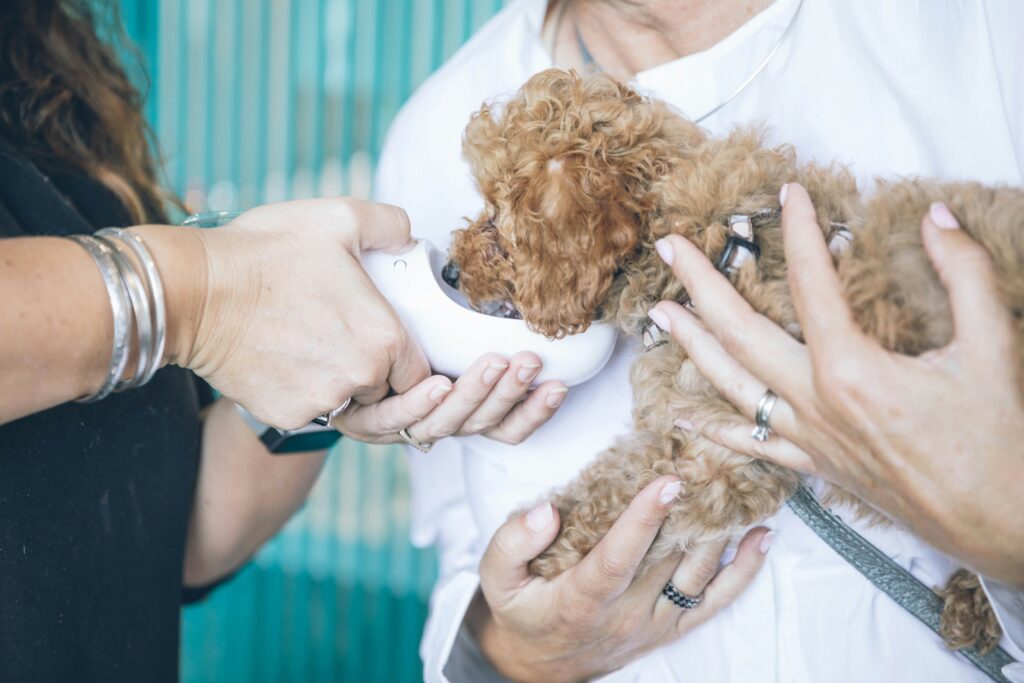Recognizing and Treating Poisoning in Dogs
Dogs are naturally curious and often explore their environment with their mouths, which makes them susceptible to poisoning. Whether it’s a toxic food, household chemical, or poisonous plant, knowing how to recognize and respond to poisoning can save your pet’s life. This guide will help you identify symptoms, take immediate action, and understand when to seek veterinary care.
Common Causes of Poisoning in Dogs
Dogs can be poisoned by a variety of substances found in everyday environments. Here are some of the most common culprits:
1. Toxic Foods
- Chocolate (especially dark chocolate and cocoa powder)
- Grapes and raisins
- Onions and garlic
- Xylitol (found in sugar-free gum, candy, and some peanut butters)
- Alcohol and caffeine
- Macadamia nuts
2. Household Chemicals
- Cleaning products (bleach, ammonia, drain cleaners)
- Antifreeze (ethylene glycol is extremely toxic)
- Pesticides and rodenticides
- Human medications (ibuprofen, acetaminophen, antidepressants)
3. Poisonous Plants
- Lilies (especially dangerous for cats, but toxic to dogs as well)
- Sago palm
- Oleander
- Rhododendron and azaleas
- Mushrooms (some wild mushrooms are highly toxic)
Signs of Poisoning in Dogs
Symptoms of poisoning can vary depending on the substance ingested, but common signs include:
- Vomiting and diarrhea (sometimes with blood)
- Excessive drooling or foaming at the mouth
- Lethargy or weakness
- Tremors, seizures, or muscle twitching
- Difficulty breathing
- Pale or bluish gums
- Collapse or unconsciousness
Immediate Actions to Take if You Suspect Poisoning
If you suspect that your dog has ingested something toxic, take these steps immediately:
1. Identify the Toxin
- Look for packaging, plant fragments, or any signs of what your dog may have eaten.
- If your dog vomits, check for unusual substances in it.
2. Call Your Veterinarian or Poison Control
- Contact your vet or a pet poison hotline such as the ASPCA Animal Poison Control Center (888-426-4435) or Pet Poison Helpline (855-764-7661).
- Provide details on the substance, amount ingested, and your dog’s weight.
3. Do NOT Induce Vomiting Unless Instructed
- Some toxins, like caustic chemicals, can cause more harm if vomited.
- If vomiting is recommended, hydrogen peroxide (3%) may be used under vet guidance (dosage is typically 1 teaspoon per 5 pounds, not exceeding 3 tablespoons total).
4. Prevent Further Exposure
- Remove any remaining toxic substance from your dog’s reach.
- If the poison is on their fur or paws, wash them with mild soap and water.
5. Transport Your Dog to the Vet Immediately
- If your dog is showing severe symptoms, get them to a veterinarian as soon as possible.
- Bring any packaging, plant material, or vomit sample for analysis.
Treatment for Poisoning in Dogs
Depending on the toxin, your vet may use several treatment methods:
- Inducing vomiting (if safe to do so)
- Activated charcoal to absorb toxins in the stomach
- IV fluids to flush toxins from the system
- Antidotes for specific poisons (e.g., Vitamin K for rodenticide poisoning)
- Oxygen therapy for breathing difficulties
- Seizure management if neurological symptoms occur
Preventing Poisoning in Dogs
Prevention is key when it comes to protecting your dog from poisoning:
- Store household chemicals and medications out of reach.
- Keep toxic foods in secure cabinets.
- Avoid using pesticides or rodenticides where pets roam.
- Identify and remove toxic plants from your home and yard.
- Supervise your dog on walks to prevent ingestion of unknown substances.
Final Thoughts
Poisoning is a life-threatening emergency that requires quick action. By recognizing the symptoms and responding immediately, you can improve your dog’s chances of recovery. Always keep emergency contact numbers handy and ensure that your home is a safe environment for your furry friend.



